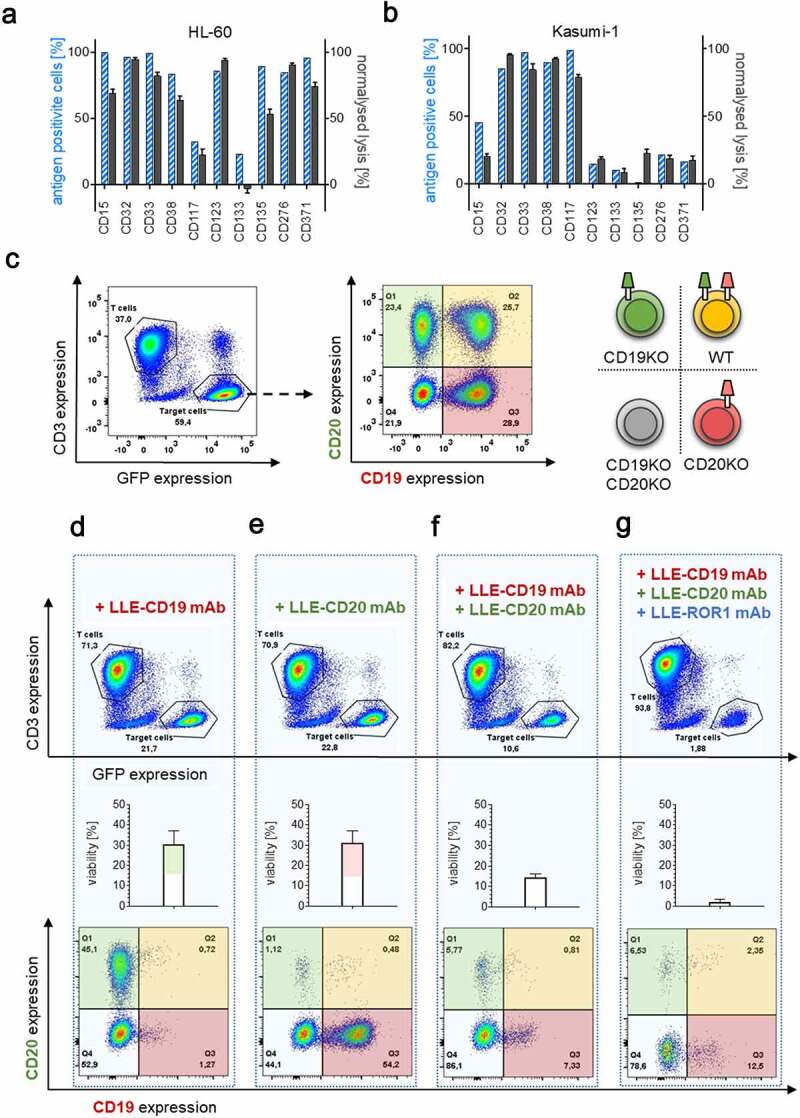Figure 4.

Universal targeting and combinatorial targeting to avoid antigen evasion
A–B) Target-antigen expression was determined by flow cytometry and calculated by Overton subtraction. Target-cell lysis was determined by LCA after incubation with AdCAR-T for 24 h at an E:T ratio of 2:1 with 10 ng/mL of the indicated LLE-mAb. Percentage of target-antigen expressing cells and normalized target-cell lysis for AML cell lines HL-60 and Kasumi-1 is shown. C–G) AdCAR-T were incubated for 48 h with an equicellular mix of antigen knockout variants of Jeko-1 (JeKo-1 WT, JeKo-1,CD19KOJeKo1CD20KO, and Jeko-1 CD19/CD20KO) at an E:T (AdCAR-T to JeKo-1) of 2:1 in the presence or absence of the 10 ng/mL LLE-CD19 mAb, LLE-CD20 mAb or LLE-ROR1 mAb or combinations thereof and analyzed by flow cytometry. C) Gating strategy to differentiate AdCAR-T (CD3 positive) and JeKo-1 (GFP positive) (left panel) and determine Jeko-1 variants by CD19 vs. CD20 staining: JeKo-1 WT (upper right), JeKo-1CD19KO (upper left), JeKo-1CD20KO (lower right), and Jeko-1CD19/CD20KO (lower left) (middle panel). Schematic illustration (right panel). D–G) to demonstrate the effect of the indicated AMs or AM combination, absolute populations (upper panel), quantification of the viability of the Jeko-1 (middle panel) and distribution of the Jeko-1 variants (lower panel) are demonstrated. Data shown in A–B) represent mean ± SEM of (n = 3) independent experiments in triplicates from 3 different donors. In D–G) representative plots and mean ± SEM of (n = 3) independent experiments of three different donors are shown.
